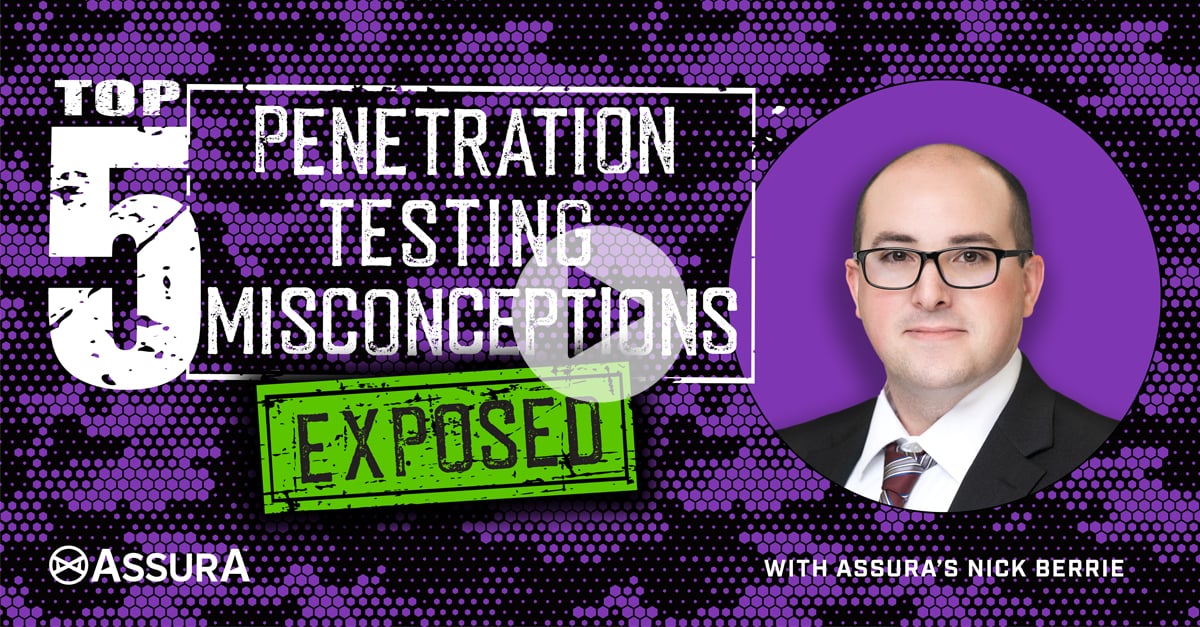With the increasing number of organizations now seeking penetration testing due to regulatory requirements, more and more companies are claiming to offer a service that checks this box. Assura wanted to help clarify some of the top misconceptions you may encounter when searching for a penetration test. We hope this demystifies the process and helps you separate fact from fiction.
If you have any questions after watching the video above, please don’t hesitate to reach out by scheduling a free penetration testing consultation, and we’ll be happy to answer them.
Assura Offers the Following Penetration Testing Services:
External & Internal Penetration Testing
- Provides insights into exploitable vulnerabilities within your environment
- Surpasses vulnerability identification to instead validate existence of vulnerabilities
- Puts technical controls and defenses to the test with real-world exploits
Web Application Penetration Testing
- Specifically identifies web application vulnerabilities
- Reassures clients and users of account security when using a website
- Discovers if a web application is also a backdoor into an internal network
Social Engineering
- Mimics how a real-world threat actor would carry out an attack
- Tests employees’ cyber defense knowledge, skills, and awareness
- Tactics include phishing, USB drops, social media, in-person, and others
Reoccurring Penetration Testing
- Creates ongoing partnership in your vulnerability management program
- Validates new changes and tests for new vulnerabilities because environments change
- Keeps employees on their toes through social engineering campaigns
Wireless Networking
- Tests for common misconfigurations and weaknesses in WiFi network design and architecture
- Determines if bad actors can steal WiFi sessions from the parking lot
- Discovers if your guest network is also a backdoor into your internal network
Open Source Intelligence (OSINT)
- Identifies information on the internet that could be valuable to attackers
- Determines the internet footprint of an organization and its employees on the open web, deep
web, and dark web - Reveals negative information that customers, potential clients, or partners could find
